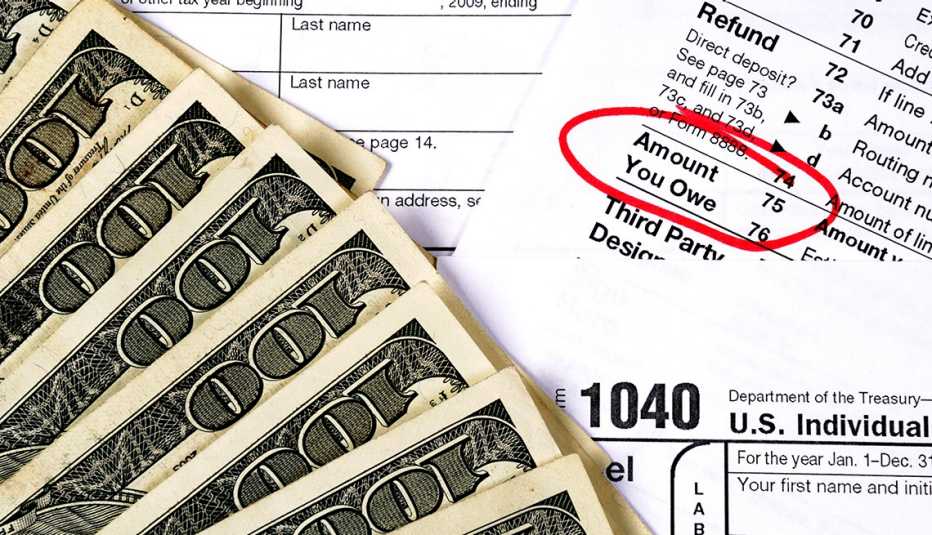AARP Hearing Center
After filing your taxes, you may exhale with relief and think, “Don’t need to think about that for another year.”
Not so fast.
Now is the time to begin planning and preparing for next year’s tax return. The actions you take now — even small ones — can make next year’s tax filing go more smoothly and even save you money.
“There’s enough stress that people have in their lives. Let’s take taxes out of that. It’s a guaranteed thing that is going to happen, and if you can make that less stressful, just do it for yourself,” says John P. Schultz, a CPA and partner at Genske, Mulder & Company in Ontario, California.
We spoke to experts about the top things to know that can make next year’s tax return less of a dreaded document.
Get organized
If you were gathering all your tax records at the last minute, now is the time to establish a better process for next year. While the stress is fresh, use it as motivation to get organized for how you will track financial records during the year. Start simple if it seems daunting. “If you just have a single folder, and you put everything that’s related to taxes in there, then you’re much better off,” says Reggie Fairchild, president of Flip Flops and Pearls Financial Planning in Charleston, South Carolina. “Everybody hates taxes. They’re scary, and the sooner you get on top of it, the less stress you’ll have. And hopefully the more money you’ll have.”
Charitable contributions and other deductions can be missed due to poor record-keeping, says Neil Becourtney, a CPA and tax partner at CohnReznick in Holmdel, New Jersey. The folder system is good for deductions such as medical expenses and charitable contributions that people pay throughout the year. “You’ll save yourself the time of having to go back in history for a year to find everything, and you probably will be more accurate and not overlook something,” Becourtney says.
Check your withholding
If you owed money when you filed your return, perhaps even incurring penalties and interest, you need to evaluate if you should increase your withholding this year. Conversely, if you received a large refund, you should assess what is being withheld to determine if it is too high. “Lots of people get really excited because they get their tax refund check, but really what that meant is that the government had your money for most of the year before you got it back from them,” Fairchild says.
The IRS Tax Withholding Estimator is a useful tool to help calculate if you need to make changes. But keep in mind that is only for federal taxes; a separate calculation may be needed for state taxes, Schultz notes.
Evaluate your life situation
Look at the year ahead and consider if there will be any major changes, such as a marriage or divorce. A change in your filing status can affect your taxes and what you should withhold. If your child will turn 19 or is no longer a student younger than 24, you cannot claim the child as a dependent. Selling your home and becoming a renter will eliminate the deductions you may have taken for mortgage interest and real estate taxes.
“Anything that has changed in your life circumstance could change your withholding,” Fairchild says.
Congrats if you already received a raise or bonus this year, or maybe you’re expecting a promotion in the coming months. The higher pay is another reason to increase your withholding. You should also consider other new income, from passive investments or rental properties.
“It should be evaluated, unless everything’s staying exactly the same,” Schultz says.
Calculate what to pay for estimated taxes
Similar to withholding, if you are paying estimated taxes you should evaluate whether you need to increase the amount you are submitting each quarter. Maybe you are self-employed and expect to earn more this year. If you are newly retired, you are no longer having taxes withheld from a paycheck and need to make estimated payments on other sources of income such as retirement funds and Social Security. Or if you have been retired but plan to withdraw more money from your investments in 2022, you may need to increase your estimated taxes.
If you have a large capital gain late in the year and have not planned for it, your estimated payments may fall short. For example, suppose you received primarily Social Security benefits the first three quarters of the year and then took a large IRA distribution in the fourth quarter. In that scenario, you can minimize, if not eliminate, any underpayment penalty by making a catch-up estimated payment in the fourth quarter, Becourtney says. But the taxpayer must file IRS Form 2210, “Underpayment of Estimated Tax by Individuals, Estates and Trusts,” with their tax return, he adds.
“They’re not automatically penalized because they weren’t a mind reader,” Becourtney says.
Budget for retirement contributions
If you were scrambling to find $7,000 by April 18 to contribute to your IRA, now is the time to create a plan to make smaller contributions throughout the year. The same budgeting, and belt-tightening if possible to free up cash, can be used to boost your 401(k) contributions.



































































